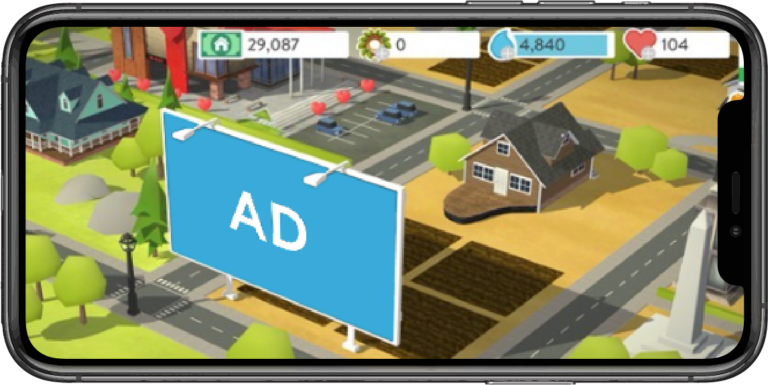How to start a marketing campaign with Frameplay
With the recent introduction to the metaverse and other virtual reality platforms, video games are reaching new heights. It is predicted that by 2023 there will be over 3.2 billion active video gamers worldwide. With so many people engaging with virtual spaces, intrinsic in-game advertising has made it possible for marketers to reach customers as they explore new platforms.
Spearheading the intrinsic in-game advertising space, Frameplay provides game developers with the monetization opportunity to display in-game ads without interfering with the gamer’s experience. Combined with Kochava measurement and attribution solutions, creating a Frameplay ad campaign has proven to be a successful marketing medium for many advertisers.
Curious about intrinsic in-game advertising? We can help you get started.
What is intrinsic in-game advertising and why is it important?
Intrinsic, by definition, means essential or a natural part of something. In in-game advertising, intrinsic advertising is the process of blending real-world ad experiences into a virtual environment. Instead of pop-up ads, interstitials, banners, or other ad formats that interrupt the player’s gaming experience and take up valuable screen real estate, intrinsic ads feel natural to the experience. For instance, users are accustomed to seeing outdoor advertising billboards along roads in the real world, so why not have a billboard along a street in a game landscape?

How does intrinsic in-game advertising work?
Frameplay works with gaming titles who have integrated Frameplay’s ad software development kit (SDK) and tagged visual real estate within their in-game experiences that they make available for ad creatives. Frameplay then works with demand-side advertisers looking to reach the world of gamers – helping them ideate creatives and calls-to-action that best fit with this marketing medium.
For example, a leading pizza chain may want to reach hungry gamers with a special delivery deal. After hours of playing virtual football against online opponents in a stadium that showcases delicious pizza ads, the gamer may choose to order a pizza online or via app, opt for delivery, and continue to play their game. From ad impression to online ordering, marketers can measure the impact of such campaigns.
Not only do intrinsic ads provide a great user experience, advertisers can achieve brand-safe advertisements, new user insights, and higher engagement with this type of marketing.
How do I get started?
Whether you’re new to Kochava or Frameplay or both, we can help you understand how to set up a campaign and acquire campaign performance data. Combined with helpful Frameplay best-practices, you will have all the tools needed to launch a successful intrinsic, in-game ad campaign with Frameplay.
Getting started with Kochava
Before launching a Frameplay campaign, it is important to set up campaign measurement within Kochava to ensure accurate and insightful campaign data. Identify your campaign attribution activities, follow the steps in this support doc, and make sure to select FrameplayAds as your media partner in step six. If you need to set up an account with Kochava, contact us.

After you create the campaign, configure your postback. Postbacks provide helpful down-funnel engagement points to fuel Frameplay’s ability to perform app event optimization and drive maximum ROI from the campaign.
To create a postback for your app installs and any in-app events, follow the instructions in our support doc. Be sure to select FrameplayAds as the media partner and enter the Frameplay Product ID (eg, 90541) along with selecting the appropriate Frameplay Event Name (the event name within the FrameplayAds) corresponding to the event you’re configuring in Kochava.

Once the Frameplay campaign has been created and the postback is configured, you will be ready to start receiving measurement and attribution analytics.
Getting started with Frameplay
Advertisers can buy Frameplay’s inventory either programmatically or through a managed service. The process is simple: contact Frameplay through the form on their website and a representative will get in touch to begin the implementation process. Frameplay makes the setup journey with Kochava efficient by providing the necessary documentation and customer support team to guide advertisers through implementation.
When setting up their campaign, advertisers can expect the following:
- Frameplay will provide onboarding documentation on how to integrate the Kochava SDK on the advertiser’s website or app (if not already present).
- Frameplay will provide the campaign’s unique Measurement ID to use during the Kochava integration.
- Each tracker will be associated with an action that can be attributed to ad impressions: application install and post-install events.
- Once the campaign conversion attribution starts, Frameplay will confirm the validated attribution measurement via the attribution reporting process.
To learn more about how Frameplay and Kochava are revolutionizing intrinsic in-game measurement, visit www.frameplay.gg and www.kochava.com.




